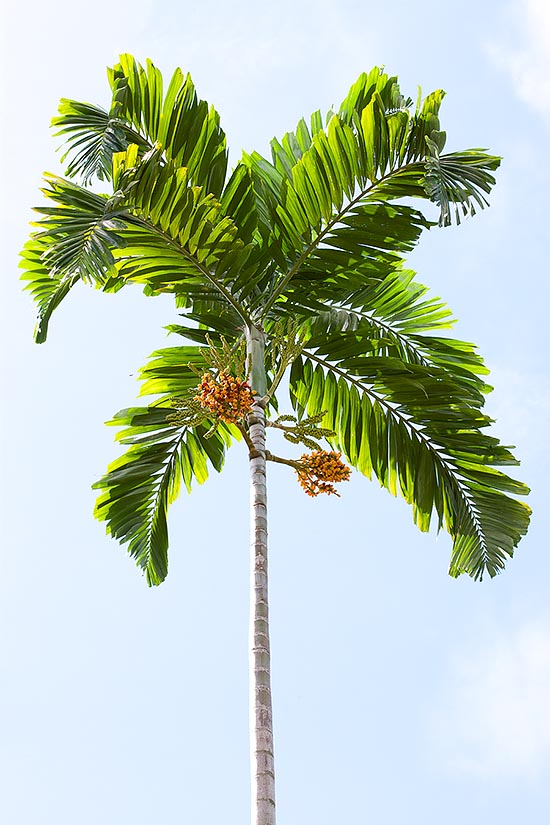Family : Arecaceae

Text © Pietro Puccio

English translation by Mario Beltramini

10 m Drymophloeus pachycladus has very elegant carriage © Giuseppe Mazza
The name of the genus is the combination of the Greek terms “drymos” = wood, forest and “phloeos” = bark, of unclear reference; the name of the species is the combination of the Greek terms “pachys” = thick and “klados” = branch, with reference to the ramifications of the inflorescence.
The Drymophloeus pachycladus (Burret) H. E. Moore (1969) is an unarmed monoecious species with single stem, tall up to about 10 m with a diameter of 6-10 cm, greyish, on which are visible the rings trace of the junction of the fallen leaves.
The dark green leaves, on a short petiole, are pinnate, 1,8-2,4 m long, slightly arcuate, with the foliar base wrapping entirely the stem, for a height of 0,8-1 m, forming a sort of an elegant capital of pale green colour. The pinnules, almost obovate, are obliquely truncated and minutely toothed at the apex, about 52 cm long and 14 cm broad in the median part.
The inflorescences generate under the leaves, are ramified, with flowers spirally disposed, on rachillae (secondary ramifications of the inflorescence) of 0,6-0,8 cm of diameter, in the typical triad (a female flower amidst two male ones), except in the apical part where are present only male flowers, these last have a high number of stamina, about 300.
The fruits are obovoid, of 2,5 cm of length and 1,5 cm of diameter, initially of green colour, then yellow and finally red when ripe, containing only one ovoid seed. It reproduces by seed which germinates in 2-3 months at the temperature of 22-24 °C.
Little diffused species with much elegant carriage, suitable only for tropical and humid subtropical climates, to be utilized as isolated specimen or in groups; it requires a semi-shaded position and draining soils, rich of organic substance, kept constantly humid, but without stagnations which may cause rottenness. Young specimens in pot can be utilized for indoor decoration, greenhouses and winter gardens in luminous position, but avoiding the direct sun.
Synonyms: Rehderophoenix pachyclada Burret (1936).
→ For general notions about ARECACEAE please click here.
